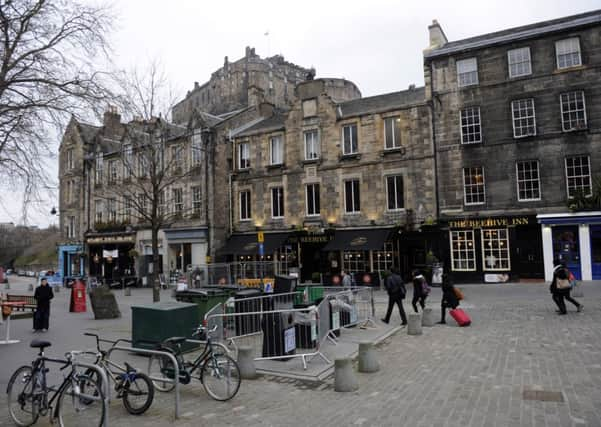Lost Edinburgh: Zeppelin Air Raid of 1916
This article contains affiliate links. We may earn a small commission on items purchased through this article, but that does not affect our editorial judgement.


Regular zeppelin bombings had been a fact of life for many southern English towns and cities since the early months of WWI. Technological advances soon meant that the air raid campaigns could spread much further afield, and by 1916 the Scottish people were no longer safe from the threat of aerial bombardment.
‘Take Air Raid Action’
From the four German zeppelins which set out from Nordholz airfield, only two would make it to the Scottish east coast, the others beset by engine failure and poor navigation.
Advertisement
Hide AdAt 9:30pm, an order from the military was received to ‘Take Air Raid Action’. Road traffic ground to a halt, street lighting was lowered, and civilians were advised to take refuge.
The Germans’ mission was to obliterate the naval base at Rosyth in Fife and then destroy the Forth Bridge.
Fortunately for the numerous warships docked on the north shore of the Forth that night, the base escaped undetected. Instead, the Imperial German Navy Zeppelin L14 was attracted by the faint light emanating from the port of Leith.
Attack on Leith
Following a successful raid on the docks at approximately 11:30pm, Zeppelin L14 managed to score a direct hit on the nearby whisky bond of Messrs Innes & Grieve on Commercial Street. The stricken warehouse quickly lit up the surrounding area, creating a helpful beacon for the zeppelin to advance further inland. £44,000 of damage was done to the whisky bond warehouse - a crippling sum of money at the time, particularly since the firm Innes & Grieve had failed to insure their property from aerial attack.
Leith was struck a number of times, with one explosion at a railway siding in Bonnington resulting in the tragic death of a baby boy fast asleep in his cot.
Advance into Edinburgh
The Germans then plotted a course along the Water of Leith towards the city of Edinburgh where the zeppelin would continue to wreak havoc, dropping eighteen high-explosives and six incendiary bombs in less than forty minutes. Eleven people perished and a number of buildings across the city, mostly tenements, were destroyed.
Advertisement
Hide AdOne bomb exploded outside the White Hart Hotel at the Grassmarket, killing one and injuring four. A flagstone located on this spot today marks the event.
The County Hotel at 21 Lothian Road suffered extensive damage throughout – paving the way for the construction of the Caley Picture House and adjoining buildings in the early 1920s.
Advertisement
Hide AdSix died at Marshall Street after being showered by blast debris from a bomb which had landed on the pavement. While a young child aged just four was killed at a tenement in the St. Leonard’s area.
A total of thirteen fatalities were reported with a further twenty-four injured.
Attempt to bomb the castle
Edinburgh Castle was the subject of a narrow miss. Not long after one incendiary had smacked off the roadway of the Mound, a high-explosive hurtled into the west face of the Castle Rock, shattering a number of windows on Castle Terrace in the process.
The One O’Clock Gun was allegedly brought into action for the first and only time in its history to defend against the onslaught. It is unlikely that any damage to the zeppelins would have been possible using blank ammo, but nevertheless the firing of the large field gun may have acted as a convincing deterrent.
Several bombs were later found to have been dropped in empty patches of land including three in the valley of the Water of Leith, one in the Meadows near Jawbone Walk, and four in King’s Park. An incendiary was also discovered in the grounds of the Royal Infirmary.
Gunners positioned on the southern slopes of Arthur’s Seat saw off L14 for the final time around 12:30am. The second airship, L22, had ventured briefly into the city, able to cause only minor damage after jettisoning most of its bombs in fields near Berwick-upon-Tweed.
Edinburgh Airport origins
Advertisement
Hide AdIt was the first time in history that the town of Edinburgh had been assaulted from the skies. The cost of the damage by the bombs, each no bigger than a sack of flour, amounted to roughly £12m in today’s money. In truth, both Edinburgh and Leith were incredibly fortunate in terms of civilian casualties and the number of buildings destroyed. Had all four zeppelins attacked that night it may have been a very different story.
The British military authorities responded to the air raid by committing to build new airfields around the Scottish capital. Fighter planes would now be deployed from an area formerly known as Turnhouse Farm. It continues to operate today as Edinburgh International Airport.
• Visit Lost Edinburgh on their Facebook page, and follow them on Twitter @lostedinburgh.